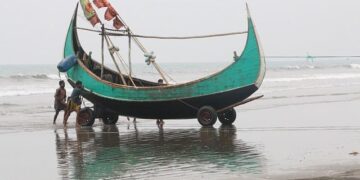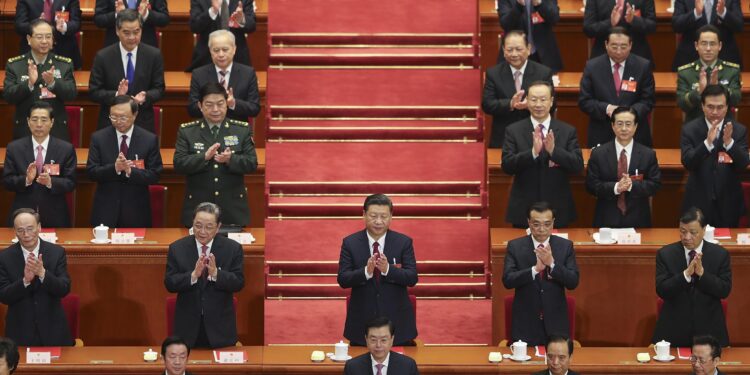At 5:13 a.m. GMT, the latest developments in Asian politics dominate the headlines, showcasing a rapidly evolving landscape marked by diplomatic maneuvers, economic initiatives, and regional security challenges. From high-stakes negotiations to policy shifts and emerging alliances, today’s updates highlight the dynamic interplay shaping the continent’s future. This article provides a comprehensive overview of the key political stories currently driving Asia’s agenda as reported on Yahoo.
Asian Political Landscape Shifts Amid Rising Regional Tensions
Recent developments across Asia have highlighted a complex and evolving political environment, driven by a convergence of economic ambitions and security concerns. Nations in the region are navigating an intricate web of alliances and rivalries, as rising nationalism and territorial disputes fuel diplomatic friction. Key players are recalibrating their foreign policies, seeking strategic partnerships to bolster influence while guarding against perceived threats. Among the most closely watched flashpoints are the South China Sea disputes, growing military posturing on the Korean Peninsula, and shifting trade alignments impacting supply chain dependencies.
Critical factors shaping the current landscape include:
- Expanding defense budgets in several countries, signaling a prioritization of military readiness.
- Economic partnerships like new regional trade agreements that could reshape market dynamics.
- Diplomatic initiatives aimed at conflict de-escalation, though progress remains tentative.
| Country | Recent Political Move | Impact |
|---|---|---|
| China | Increased naval patrols | Tensions rise in South China Sea |
| India | Strengthened border infrastructure | Enhanced defense readiness |
| Japan | New security pact with Australia | Closer regional cooperation |
| South Korea | Calls for diplomatic talks | Potential easing of peninsula tensions |
Economic Strategies and Diplomatic Moves Shaping Asia’s Future
Asia is witnessing a dynamic shift as nations recalibrate their economic frameworks alongside strategic diplomatic engagements. Countries like China, India, and Japan are leveraging large-scale infrastructure projects, such as the Belt and Road Initiative and regional connectivity agreements, to extend their influence and reshape trade routes. At the same time, emerging economies are adopting innovation-driven growth models to foster self-reliance and reduce dependency on Western markets.
Diplomatic moves are equally pivotal in defining the region’s trajectory. Key developments include:
- Multilateral security pacts: Strengthening alliances to counterbalance rising tensions in the Indo-Pacific.
- Trade liberalization efforts: Pursuing Free Trade Agreements (FTAs) that promote economic integration.
- Energy cooperation: Joint investments in renewable energy projects to address climate change and energy security.
- Cultural diplomacy: Enhancing soft power by deepening people-to-people connections and cultural exchanges.
| Country | Key Economic Initiative | Recent Diplomatic Move |
|---|---|---|
| China | Digital Silk Road Expansion | New Security Talks with ASEAN |
| India | Make in India Relaunch | Quad Summit Participation |
| Japan | Green Energy Partnerships | Bilateral Trade Accord with Australia |
Policy Recommendations for Navigating Complex Geopolitical Challenges
In the face of escalating tensions and unpredictable alliances across Asia, governments must prioritize diplomatic agility combined with robust multilateral engagement. Enhancing communication channels with regional partners, including emerging powers and traditional stakeholders, allows for a proactive approach to conflict prevention and crisis management. Simultaneously, investing in intelligence-sharing initiatives can provide timely insights into shifting dynamics, reducing the risks of miscalculation. These strategies should be paired with clear public messaging to manage domestic expectations and reinforce commitments to regional stability.
Furthermore, policymakers are urged to adopt a balanced framework that integrates economic, security, and technological considerations. Below is a concise overview of key policy focus areas designed to foster resilience amid geopolitical complexity:
- Economic Diversification: Reduce dependency on single trade partners to mitigate supply chain vulnerabilities.
- Defense Modernization: Upgrade capabilities with an emphasis on interoperability among allies.
- Cybersecurity Cooperation: Establish protocols for information sharing and joint response to digital threats.
- Climate Diplomacy: Leverage environmental challenges as platforms for collaborative action, fostering goodwill.
| Policy Area | Primary Objective | Potential Impact |
|---|---|---|
| Economic Diversification | Enhance supply chain resilience | Reduced trade disruption risks |
| Defense Modernization | Strengthen regional deterrence | Improved crisis response |
| Cybersecurity Cooperation | Protect critical infrastructure | Minimized cyberattack damages |
| Climate Diplomacy | Build multilateral trust | Enhanced regional collaboration |
In Retrospect
As developments continue to unfold across the region, staying informed through timely updates remains crucial. “Asian Politics Headlines at 5:13 a.m. GMT – Yahoo” provides a concise snapshot of the latest political currents shaping Asia. Readers are encouraged to follow ongoing coverage for deeper insights and analysis as events progress.































